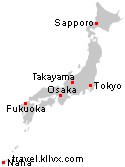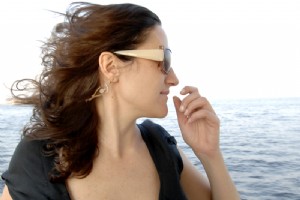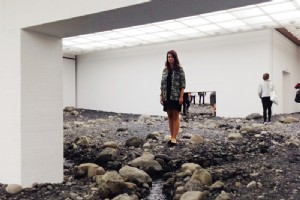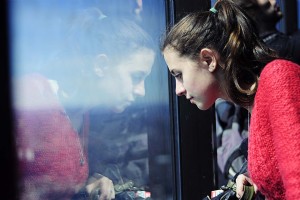旅行するとき

以下の表は、選択した都市の日中の平均最高気温と夜間の最低気温、および晴れと雨の日の平均パーセンテージを示しています。雨の日とは、1 mm以上の雨が降る日と定義され、晴れた日とは、日中に太陽が40%以上輝く日と定義されます。
(出典:気象庁)
1月
| City | 平均 日中の高値 | 平均 夜間低 | Rainy / Snowy Days
| 晴れた日
| ||||
| Sapporo | -1 C(30 F) | -8 C(18 F) | 60% | 60% | 40% | 35% | ||
| 東京 | 10 C(50 F) | 2 C(36 F) | 15% | 15% | 75% | 70% | ||
| 高山 | 3 C(37 F) | -5 C(23 F) | 50% | 40% | 30% | 40% | ||
| 大阪 | 9 C(48 F) | 3 C(37 F) | 20% | 20% | 60% | 55% | ||
| 福岡 | 10 C(50 F) | 3 C(37 F) | 25% | 30% | 40% | 35% | ||
| ナハ | 19 C(66 F) | 14 C(57 F) | 35% | 35% | 35% | 30% |
正月は、国内および海外の旅行が集中する日本の3つの主要な旅行シーズンの1つです。多くのショップ、レストラン、観光名所は、12月29日から1月4日までの少なくとも1日間は休業しています。正月の日本訪問について詳しくは、こちらをご覧ください。
1月の残りの期間は日本を訪れるのに良い時期です。天気は通常晴れて乾燥していて、観光スポットはそれほど混雑していません(おそらく中国の旧正月前後を除く)。日本北部と日本海沿岸にのみ降雪が多く、ウィンタースポーツに適したコンディションです。冬の訪問の欠点は、比較的短い日(東京では日没は午後5時頃)と植生の不毛の状態です。
2月
| City | 平均 日中の高値 | 平均 夜間低 | Rainy / Snowy Days
| 晴れた日
| ||||
| Sapporo | 0 C(32 F) | -7 C(19 F) | 55% | 60% | 45% | 45% | ||
| 東京 | 10 C(50 F) | 2 C(36 F) | 15% | 25% | 70% | 65% | ||
| 高山 | 4 C(39 F) | -5 C(23 F) | 45% | 45% | 45% | 45% | ||
| 大阪 | 9 C(48 F) | 3 C(37 F) | 15% | 25% | 60% | 55% | ||
| 福岡 | 11 C(52 F) | 4 C(39 F) | 25% | 30% | 55% | 45% | ||
| ナハ | 19 C(66 F) | 14 C(57 F) | 35% | 40% | 30% | 35% |
1月のように、2月は日本を訪れるのに良い時期です。天気は通常晴れて乾燥していて、観光スポットはそれほど混雑していません(おそらく中国の旧正月前後を除く)。冬の訪問の欠点は、比較的短い日(東京では日没は午後5時30分頃)と植生の不毛の状態です。
北日本と日本海沿岸は雪がたくさん降ります。冬のピーク時には、2月はウィンタースポーツや、北海道の流氷や白川郷の雪に覆われた農家などの冬の風景を見るのに最適な時期になる傾向があります。
3月
| City | 平均 日中の高値 | 平均 夜間低 | Rainy / Snowy Days
| 晴れた日
| ||||
| Sapporo | 4 C(39 F) | -4 C(25 F) | 50% | 40% | 55% | 50% | ||
| 東京 | 13 C(55 F) | 5 C(41 F) | 25% | 35% | 60% | 55% | ||
| 高山 | 9 C(48 F) | -2 C(28 F) | 45% | 45% | 55% | 50% | ||
| 大阪 | 13 C(55 F) | 5 C(41 F) | 30% | 35% | 60% | 55% | ||
| 福岡 | 14 C(57 F) | 6 C(43 F) | 35% | 35% | 50% | 50% | ||
| ナハ | 21 C(70 F) | 16 C(61 F) | 35% | 40% | 40% | 30% |
早咲きの植物や梅の木などの樹木は、春の最初の兆候を示しますが、天候は著しく穏やかになります。 3月末にかけて、特定の地域で桜の季節が始まりますが、日本の北部では、ウィンタースポーツに適した状態が続いています。国内旅行は、春休みのため3月下旬に増加します。
4月
| City | 平均 日中の高値 | 平均 夜間低 | Rainy / Snowy Days
| 晴れた日
| ||||
| Sapporo | 11 C(52 F) | 3 C(37 F) | 30% | 30% | 55% | 50% | ||
| 東京 | 18 C(64 F) | 11 C(52 F) | 35% | 35% | 55% | 55% | ||
| 高山 | 17 C(63 F) | 3 C(37 F) | 40% | 35% | 55% | 55% | ||
| 大阪 | 20 C(68 F) | 11 C(52 F) | 35% | 30% | 60% | 60% | ||
| 福岡 | 19 C(66 F) | 11 C(52 F) | 35% | 35% | 55% | 55% | ||
| ナハ | 24 C(75 F) | 19 C(66 F) | 40% | 35% | 35% | 45% |
秋のほか、ほとんどの地域で桜の季節があり、天気も穏やかなため、4月は日本を訪れるのに最適な時期と考えられています。国内旅行活動は、春の学校休みのために4月上旬に、ゴールデンウィークの開始のために4月下旬に、そして桜の季節のために月の残りのほとんどの期間に増加します。
5月
| City | 平均 日中の高値 | 平均 夜間低 | Rainy / Snowy Days
| 晴れた日
| ||||
| Sapporo | 17 C(63 F) | 8 C(46 F) | 30% | 30% | 55% | 50% | ||
| 東京 | 23 C(73 F) | 15 C(59 F) | 30% | 35% | 50% | 50% | ||
| 高山 | 22 C(72 F) | 9 C(48 F) | 35% | 35% | 55% | 55% | ||
| 大阪 | 24 C(75 F) | 15 C(59 F) | 35% | 30% | 60% | 60% | ||
| 福岡 | 24 C(75 F) | 15 C(59 F) | 30% | 30% | 55% | 60% | ||
| ナハ | 26 C(79 F) | 22 C(72 F) | 30% | 40% | 45% | 40% |
日本で最も忙しい旅行シーズンの1つであるゴールデンウィークは、4月の終わりから5月の初めに開催され、旅行に関連するさまざまな懸念の原因となる可能性があります。
しかし、5月の残りは、植生が豊かになり、気温はまだ快適で、観光スポットは混雑していない傾向があるため、日本を訪れるのに最適な時期の1つです。北海道では、東京に比べて春の進行が約1ヶ月遅れています。国の反対側の沖縄では、雨季(つゆ)は通常5月上旬から6月中旬まで続きます。
6月
| City | 平均 日中の高値 | 平均 夜間低 | Rainy / Snowy Days
| 晴れた日
| ||||
| Sapporo | 21 C(70 F) | 12 C(54 F) | 25% | 20% | 55% | 50% | ||
| 東京 | 25 C(77 F) | 19 C(66 F) | 35% | 45% | 45% | 25% | ||
| 高山 | 26 C(79 F) | 15 C(59 F) | 30% | 45% | 55% | 30% | ||
| Osaka | 27 C (81 F) | 20 C (68 F) | 30% | 45% | 55% | 35% | ||
| Fukuoka | 27 C (81 F) | 19 C (66 F) | 25% | 50% | 55% | 35% | ||
| Naha | 29 C (84 F) | 25 C (77 F) | 45% | 25% | 40% | 60% |
From the beginning of June, the rainy season (tsuyu) visits most parts of Japan except Hokkaido. While it does not rain every day, the weather tends to be overcast and dreary. The duration and intensity of the rainy season can vary quite strongly from year to year.
Hot spring resorts like Hakone and the wooded temple mountain Koyasan are some places that can be quite attractive in rainy weather. Hokkaido is an attractive destination in June as it is least affected by the rainy season. Also, the weather in Okinawa takes a dramatic turn to the better after the end of the rainy season there in late June.
July
| City | Average Daytime High | Average Nighttime Low | Rainy/Snowy Days
| Sunny Days
| ||||||
| Sapporo | 25 C (77 F) | 17 C (63 F) | 25% | 25% | 40% | 45% | ||||
| Tokyo | 29 C (84 F) | 23 C (73 F) | 35% | 30% | 30% | 40% | ||||
| Takayama | 29 C (84 F) | 19 C (66 F) | 55% | 40% | 35% | 50% | ||||
| Osaka | 31 C (88 F) | 24 C (75 F) | 40% | 25% | 45% | 60% | ||||
| Fukuoka | 31 C (88 F) | 24 C (75 F) | 40% | 30% | 40% | 60% | ||||
| Naha | 31 C (88 F) | 26 C (79 F) | 25% | 30% | 80% | 80% | ||||
The rainy season (tsuyu) typically ends in the first half of July. It is hot and humid in most of Japan, and just standing outdoors can make you sweat. The conditions are more comfortable in higher elevations and in Hokkaido, a highly popular destination among outdoor lovers during the summer months.
Many local festivals and fireworks are held. Mount Fuji is opened for climbing. Cormorant fishing can be observed. It is also a very good time of the year for beach holidays in Okinawa. With the summer school holidays from late July through August, domestic travel activity increases considerably.
August
| City | Average Daytime High | Average Nighttime Low | Rainy/Snowy Days
| Sunny Days
| ||||||
| Sapporo | 26 C (79 F) | 19 C (66 F) | 25% | 30% | 50% | 50% | ||||
| Tokyo | 31 C (88 F) | 24 C (75 F) | 25% | 25% | 55% | 50% | ||||
| Takayama | 31 C (88 F) | 20 C (68 F) | 35% | 35% | 60% | 60% | ||||
| Osaka | 33 C (91 F) | 25 C (77 F) | 20% | 25% | 70% | 70% | ||||
| Fukuoka | 32 C (90 F) | 25 C (77 F) | 25% | 30% | 65% | 60% | ||||
| Naha | 31 C (88 F) | 26 C (79 F) | 40% | 35% | 70% | 75% | ||||
August is hot and humid in most of Japan. The conditions are more comfortable in higher elevations and in Hokkaido, a highly popular destination among outdoor lovers during the summer months. Many local festivals and fireworks are held in August. Travel activity is high during the entire month due to summer school holidays, but is especially intensive during the Obon week in mid August.
September
| City | Average Daytime High | Average Nighttime Low | Rainy/Snowy Days
| Sunny Days
| ||||||
| Sapporo | 22 C (72 F) | 14 C (57 F) | 30% | 35% | 50% | 55% | ||||
| Tokyo | 27 C (81 F) | 21 C (70 F) | 35% | 40% | 40% | 35% | ||||
| Takayama | 26 C (79 F) | 16 C (61 F) | 40% | 40% | 45% | 45% | ||||
| Osaka | 29 C (84 F) | 21 C (70 F) | 30% | 35% | 60% | 50% | ||||
| Fukuoka | 28 C (82 F) | 21 C (70 F) | 35% | 30% | 55% | 55% | ||||
| Naha | 30 C (86 F) | 25 C (77 F) | 35% | 40% | 70% | 65% | ||||
The typhoon season reaches its peak in August and September. Typhoons usually hit the coasts of Okinawa, Kyushu and Shikoku and cause strong rain and wind in wide parts or all of Japan for about two days. Luckily, typhoons are often followed by perfectly clear weather. The weather in September can still be quite hot and humid, but the crowds of August have mostly disappeared.
October
| City | Average Daytime High | Average Nighttime Low | Rainy/Snowy Days
| Sunny Days
| ||||||
| Sapporo | 16 C (62 F) | 7 C (45 F) | 35% | 40% | 60% | 50% | ||||
| Tokyo | 22 C (72 F) | 15 C (59 F) | 35% | 30% | 40% | 55% | ||||
| Takayama | 20 C (68 F) | 9 C (48 F) | 35% | 30% | 45% | 55% | ||||
| Osaka | 23 C (73 F) | 15 C (59 F) | 30% | 25% | 55% | 65% | ||||
| Fukuoka | 23 C (73 F) | 15 C (59 F) | 20% | 20% | 60% | 65% | ||||
| Naha | 28 C (82 F) | 23 C (73 F) | 25% | 25% | 65% | 65% | ||||
October is one of the most pleasant months for traveling in Japan as the weather remains warm, but is not hot and humid anymore. Trees begin turning colors in the northern regions and higher elevations.
November
| City | Average Daytime High | Average Nighttime Low | Rainy/Snowy Days
| Sunny Days
| ||||||
| Sapporo | 8 C (46 F) | 1 C (34 F) | 45% | 45% | 40% | 35% | ||||
| Tokyo | 17 C (63 F) | 10 C (50 F) | 25% | 20% | 55% | 60% | ||||
| Takayama | 13 C (55 F) | 2 C (36 F) | 35% | 35% | 45% | 40% | ||||
| Osaka | 17 C (63 F) | 10 C (50 F) | 20% | 20% | 60% | 60% | ||||
| Fukuoka | 18 C (64 F) | 10 C (50 F) | 30% | 25% | 55% | 50% | ||||
| Naha | 24 C (75 F) | 20 C (68 F) | 25% | 30% | 55% | 45% | ||||
November is one of the best times to visit Japan, as the weather is relatively dry and mild, and the autumn colors are spectacular in many parts of the country. Travel activity tends to be low except around popular autumn leaf spots.
December
| City | Average Daytime High | Average Nighttime Low | Rainy/Snowy Days
| Sunny Days
| ||||||
| Sapporo | 2 C (36 F) | -4 C (25 F) | 50% | 50% | 35% | 35% | ||||
| Tokyo | 12 C (54 F) | 5 C (41 F) | 15% | 10% | 65% | 75% | ||||
| Takayama | 6 C (43 F) | -2 C (28 F) | 40% | 40% | 35% | 35% | ||||
| Osaka | 12 C (54 F) | 5 C (41 F) | 20% | 15% | 65% | 65% | ||||
| Fukuoka | 13 C (55 F) | 5 C (41 F) | 30% | 25% | 45% | 45% | ||||
| Naha | 21 C (70 F) | 16 C (61 F) | 25% | 30% | 45% | 40% | ||||
December is a good month for traveling thanks to generally dry weather conditions. Domestic travel activity remains low during the first half of December until the beginning of winter school holidays around December 23. The downsides of a visit in winter are the relatively short days (sunset is around 4:30pm in Tokyo) and the barren state of the vegetation. From around December 29 some tourist attractions close down for the New Year holidays. The ski season starts in December.






